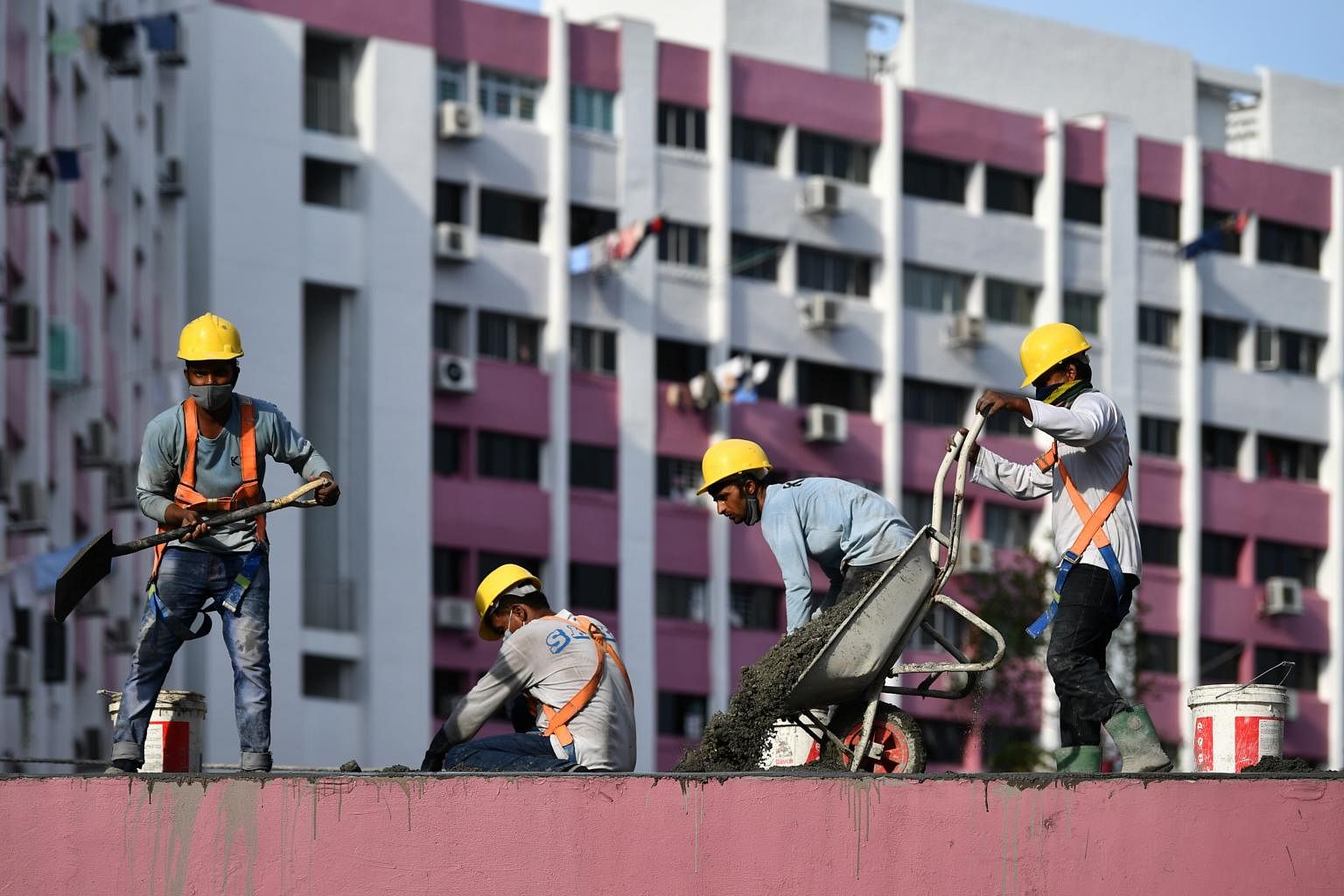Construction industry accounted for most workplace deaths in first half of 2022
Sign up now: Get ST's newsletters delivered to your inbox

Workplace safety has been in the spotlight this year after a rise in the number of workplace deaths.
ST PHOTO: LIM YAOHUI
Follow topic:
SINGAPORE - The construction sector accounted for the highest number of workplace deaths and major injuries in the first half of this year, while the overall number of workplace deaths here doubled to 28 from the previous six months.
The construction industry had 10 deaths and 84 cases of major injuries, compared with six deaths and 63 major injuries in the second half of last year, where there were 14 workplace deaths in total.
Observers attributed the spike to the overstretched construction sector scrambling to catch up with pandemic-induced work delays, but also poor safety practices that must be weeded out.
The Ministry of Manpower (MOM) has stepped up enforcement efforts in the industry, MOM and the Workplace Safety and Health (WSH) Council said on Friday, in releasing the half-year workplace safety statistics.
From January to mid-September, 63 stop-work orders were issued to work sites in the construction industry with unsafe conditions and practices that posed imminent danger to workers.
One such order was imposed on Wah Khiaw Developments on Aug 11. Multiple unsafe practices were found, such as workers working at heights without barricades or fall-arrest systems. The company was fined $15,000.
It has to rectify the lapses before the stop-work order is lifted.
Workplace safety has been in the spotlight this year, and the death of a Grab delivery rider on Sept 1 brought the number of workplace fatalities so far this year to 37 – the same for the whole of last year.
Falls from height and vehicular incidents accounted for half of the deaths in the first six months of the year, with seven cases each.
Four deaths were due to collapse or failure of structures and equipment. Another four were caused by slips, trips and falls.
Also, two workers died in crane-related incidents, while four other deaths were categorised as “others”.
National Trades Union Congress assistant secretary-general Melvin Yong said the pandemic led to a manpower crunch in the industry as many workers returned to their home countries.
Safe management measures also affected the pace of construction works.
As Covid-19 measures were gradually relaxed from April, many firms hired more workers, he said. New workers need time to familiarise themselves with their roles, and the rush to clear the backlog of work might have contributed to more workplace incidents, he said.
Dr Goh Yang Miang, former chairman of the health and safety engineering technical committee at The Institution of Engineers, Singapore, said workplace accidents are more prone to occur in the construction industry in the post-pandemic economic recovery period.
“Many a time, some of these bad habits, poor safety culture, deterioration of safety practices will be hidden until accidents happen,” he said. “By then, it is too late.”
Other than the construction industry, there were five deaths in the transportation and storage industry, four in manufacturing and four in marine.
There were two deaths each in real estate services, and accommodation and food services, while one other fatality was categorised under “others”.
However, the number of reported workplace injuries – both major and minor – fell.
In the first half of the year, there were 10,401 work injuries with medical leave or light duties. This was lower than the 11,248 in the same period last year, as well as the 10,901 in the second half.
It also translated to 6,046, 6,486 and 6,280 injuries to the corresponding periods, under the earlier calculation method.
Before January 2021, workplace major and minor injury numbers covered injuries that resulted in four or more days of medical leave, or at least 24 hours of hospitalisation.
Earlier this month, MOM introduced a slate of new measures to improve workplace safety.
Among other things, companies will not be allowed to hire new foreign workers for up to three months if unsafe work conditions or poor risk controls are found during a six-month “heightened safety” period from Sept 1 to Feb 28 next year.
MOM also announced plans to standardise the criteria used to disqualify unsafe contractors from public construction tenders from Oct 1.

